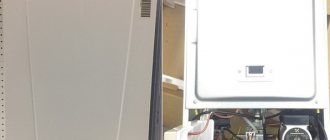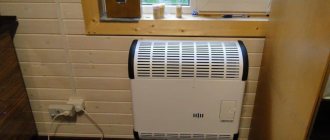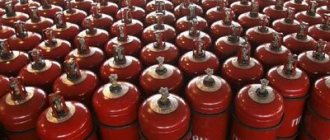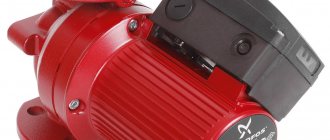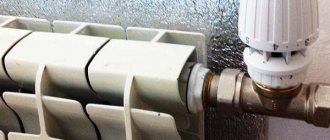Popular home heating with electric convectors cannot be called economical, like all devices that use network resources. However, it deserves the attention of private home owners as an alternative to gas mains, the installation of which requires compliance with many aspects.
In addition, not all regions of Russia can provide such a service, in the absence of a gas pipeline at all. The advantages and disadvantages of this type of heater and ways to save money when using these systems are described below.
Heating using a convector
Sometimes it is not advisable to install major heating in a house due to the high cost of funds.
Investments are required for the purchase of equipment, pipes, and a device for removing combustion products. The work of specialists also costs a lot of money. To heat your home you need to purchase fuel every year. In order not to spend money on short-term heating of the house, the owners found an economical solution in the form of using electric heating convectors for heating.
Not only private sector owners are showing interest in heating systems with electric convectors, but also residents of apartment buildings are purchasing devices for additional heating in the winter.
Residents of Europe, Asia and our country are increasingly using electric convectors to create heat indoors, because in some conditions convectors are the only way for a person not to freeze in the cold.
Heating with an electric convector, according to consumer reviews, allows you to provide high-quality heating , but spend decent amounts of money from the family budget, because the price of electrical energy is not low.
Electric convectors are considered as an option for temporary heating or heating for the main heating system. Preference is given to this type even if it is not possible to install another type of heating.
If you calculate all the costs incurred for the installation and maintenance of capital heating and compare them with the costs of paying for the electricity consumed by the convector, you can come to the logical conclusion that heating with electric convectors becomes an acceptable method.
When using electric convectors to heat rooms, these devices must meet the following requirements:
- The device must be equipped with a monolithic tubular-type heating element.
- The electrical device must be equipped with a temperature controller with an electronic system to protect the Prior from overheating.
- It is mandatory to have an automatic button to stop operation if the convector falls.
- It is advisable to install the heater not only on the floor, but also to hang it on the wall, for which purpose the housing design must provide for appropriate fastening.
Heating system options
So, let's look at existing equipment that will make electric heating in the house economical and cheap.
Using the boiler
Installing an electric boiler, which will heat water in the home heating system, warming up the room, is the first, least effective option. Of course, on the Internet you can see a bunch of information that talks about economical boilers that can reduce consumption by up to 80%, but all this is nonsense. The only option to reduce costs is to install thermostats and various automation systems, which will turn on only when the temperature in the room drops, as well as at certain times of the day. All other talk about new product designs or reduced power is just a publicity stunt. If you buy a small-power boiler, it will take more time to heat the water for heating the house, so that’s what it will do.
Using IR Panels
Installing infrared heaters is a more reasonable solution and, most likely, the most profitable. The fact is that these products do not heat the air in the room, but certain objects (floor, walls, closet), from which heat is subsequently transferred. If in the previous version the hot air will rise to the ceiling and immediately cool down, then in this case the heat is directed to the floor, which is more reasonable (people do not walk on the ceiling).
This diagram shows the efficiency of an economical heating system for a private home:
You see everything for yourself, so there is nothing more to prove. It should only be noted that IR devices can work more efficiently if you add thermostats to them. One regulator is enough to control three heaters in an economical heating system for a private home. We talked about how to connect a thermostat to an infrared heater in a separate article.
Using convectors
Many manufacturers convince us that an electric convector effectively heats a room and at the same time consumes a small amount of electricity. The issue is of course controversial, because, in fact, the principle of operation of the products is similar to the option with radiators (the air rises upward). The advantage of convectors is that their installation and connection are not difficult. In addition, heating of the heating element takes about one minute, which is undoubtedly faster than in the case of water radiators.
Other advantages of electric convectors include:
- low cost (from 2 to 10 thousand rubles);
- fire safety (which is especially important when installing heating in a wooden house);
- you can gradually increase the heating system (one convector for a room is not enough, buy another one and connect it to the network without any problems);
- attractive appearance;
- trouble-free operation during power surges (also important in the private sector);
- compact sizes.
Separately, I would like to recommend that you explore a heating option such as electric heated floors. You can find out a review of this heating system by watching the video:
Application of heated floors
We analyzed reviews from customers who used this option and saw that most people were satisfied with the purchase. The main thing is to additionally install a temperature regulator in order to make economical electric heating in the house with your own hands.
Pros and cons of devices
According to customer reviews, using devices for heating a home has a number of undeniable advantages:
- to start heating activities, you just need to buy the device in a store and connect it to the power system; you don’t need to issue any permits;
- does not require periodic maintenance and repair to maintain in working order, operation of the device is simple and accessible to everyone;
- the devices operate quietly and do not disturb the silence, only the clicks of automatic mode switching are heard, which in terms of volume are not always perceptible to the ear;
- after turning on the device, the air in the room very quickly gains temperature, after half an hour we can already talk about the onset of comfortable conditions;
- according to consumer reviews, significant cost savings are observed after choosing the optimal heating mode, which is set using modern temperature controllers;
- low price of purchase, connection and consumption of the device, compared with other types of heating;
- electric convectors with closed heating elements do not dry out the surrounding atmosphere, oxygen in the air is not burned off;
- heating the elements does not lead to the release of harmful substances and poisonous gases;
- When operating in automatic - economical mode, the service life of an electric convector is determined to be a couple of decades.
Like any heating device, an electric convector will consume less material for operation if high-quality insulation of the building envelope is carried out.
Heating with electric convectors has a number of disadvantages:
- Reviews say that with constant intensive heating of the house with convectors, each heating month you have to pay significant amounts for heating.
- Cooling of the room occurs as quickly as heating, which is explained by the low inertia of the device.
- Sometimes it is impossible to connect to a power source in the house due to the low power of the wiring.
- To install software for more economical use of the device, the purchase of additional electronic equipment is required.
The principle of using a convector
The heating effect of the convector is carried out by passing cold air masses through the heating element to increase the temperature.
The heated air, in accordance with physical law, rises and mixes with the atmosphere of the room, heating it. A fan installed in the convector improves the circulation of air masses and speeds up the heating process .
ceramic heating element has high resistance and actively contributes to increasing the temperature in the room.
What is convection
Convective heating uses the simplest laws of physics, according to which heated air becomes lighter and rises. Every heating convector is built on this principle, regardless of what it is powered from. As practice shows, this scheme is highly effective - residential premises become warm, and relatively quickly.
Convector heating allows you to heat rooms for any purpose - these can be living rooms, children's rooms, corridors and foyers, kitchen areas, bathrooms and toilets, covered balconies and loggias. It heats using heated air, quickly saturating the heated rooms with heat. Let's see how the warming up process occurs:
All convectors work on the same principle - they create air circulation in the room, gradually warming it up.
- Possessing a large working surface area, the heating element heats the air around it;
- Warm air masses rise upward, leaving the equipment (or simply going upward if convector-type heating radiators are used);
- Cold air masses replace the air that has gone up.
The process is repeated until convector heating warms up all the air in the rooms.
Heating elements can be powered by electricity or by burning gas fuel. Convector-type heating batteries operate due to the coolant entering them. By the way, the batteries do not have housings, unlike the same electric and gas convectors. But their operating principle is similar - heating is carried out due to the heating air, and the thermal radiation from them is very weak.
Types of convectors by installation method
Electric convectors for heating are divided into the following types : wall convectors;
convectors on the floor; appliances operating in floor niches; devices built into the baseboard. Wall-mounted appliances have more power compared to other appliances. They do not take up floor space, so they are easy to use. The disadvantages of this placement option include the fact that warm air does not fall down, but tends to the ceiling, and the floor remains cold.
Floor-standing types of appliances, although they are produced with less power, but due to their location near the floor surface, heat the room much faster. Convenient is the ability to move to different points, which cannot be done with a permanently mounted electric wall convector.
The installation of small-sized electric heating devices in floor niches significantly saves space in small rooms. In recent years, such placement has been very popular, although it requires preliminary work.
Skirting types of convectors have won positive reviews . Their power is small, but to increase the flow of warm air, some users buy two or more devices, which equates to the energy consumption of a large device.
Different types of thermostats
These devices are designed to control the switching on of the convector and the end of its operation in accordance with the required mode of heating the room.
The temperature regulator is adjusted so that if there are no residents in the house, the room is heated in a gentle mode and does not require unnecessary consumption of electrical energy. By time, you can set a mode when the switching on occurs automatically with the return of household members.
Temperature regulators can be mechanical or electronic . The first type significantly reduces the price of the device, but is not very convenient in terms of comfort. It cannot fully monitor the temperature regime; sometimes it allows, albeit minimal, additional waste of electricity.
In addition, switching is accompanied by quiet sounds, which at night can cause trouble for a sleeping person.
An electronic device has an undeniable advantage in terms of quality of work, but is inferior in price to a mechanical device. It is reliable in operation and has zero indicator errors.
Such devices are equipped with remote control and support various modes of presence and absence of residents. Absolutely silent in operation. Expensive in price, but comfortable use pays for all costs.
Which option is better to avoid?
We talked about cheap and effective systems for economical heating of a private home, but we would also like to point out the most expensive options that should be avoided. The top of the ranking is occupied by oil radiators. They are known to everyone for having high power, so when working in winter you can see a noticeable increase in electricity consumption.
Not only do these products have high power, but their heating efficiency is also very weak. For example, an IR panel of the same dimensions and the same power will make the house warmer faster, so it is better to give preference to it.
In addition, an infrared heater is installed on the ceiling or wall, thereby not occupying free space, which cannot be said about electric radiators.
Another not recommended option is fan heaters. These devices not only burn oxygen, but also “drive away dust” and are also noisy. The effectiveness of their use is not very high, because... between the ceiling and floor, the temperature may differ by several degrees, despite the fact that the power of the products is high (from 1.5 kW).
Construction of electrical conversion devices
Heating elements are:
- Like a pipe with aluminum ribs.
- Needle type.
- Monolithic heaters.
In a tubular heater, a nichrome filament is placed in a steel tube. The cavity between the thread and the walls is filled with a material with high thermal conductivity. Aluminum fins on the pipe enhance air movement and provide heat transfer. It is an economical type of heating element, as it heats up more slowly than others and is much lower in temperature.
Many modern models of convectors are equipped with protection against water ingress , which makes it possible to install them in a bath or shower room. Due to the unequal coefficient of expansion when heating aluminum and the tube material, they crack a little during operation.
Needle heaters are made like a dielectric plate, on both sides of which there are heating chrome and nickel filaments. They are treated with a layer of varnish. Such elements operate silently, since the plate and threads heat up and expand in the same mode.
Needle elements are produced only for dry rooms, since they do not provide protection against moisture. Types of needle convectors are short-lived and impractical , they are produced much less frequently and are not in demand among users.
Monolithic and tubular types are deservedly popular due to their efficient and silent operation.
Why electric heaters?
You will immediately ask yourself why classic water or stove heating of rooms is not considered? The answer is simple - this is due to the fact that installation work and maintenance for approximately the same money will be reduced to a minimum.
Now we will provide several reasons why it is obvious that the best and most economical heating system for a private home is electric.
- Electric heaters are silent, do not require additional resources (coal, firewood, liquid fuel) and do not pollute the atmosphere. This means that in a private house there is no need to have space in the utility room for fuel, make a chimney, and also remove soot every year. All you need to do is connect the system to the network and enjoy the warmth.
- Installing an entire electric heating system does not require a huge upfront cash investment. For example, installation of a water heating main is carried out once. A project is created, all pipes, radiators, a boiler, as well as additional automation are purchased. You will not be able to complete part of the work (for example, in one room), and if you have money, you will not be able to complete the project over time, and if you succeed, many problems will arise. It will be necessary to drain the water, cut into the finished highway, etc. In the case of electric heaters, everything is much simpler. You can install equipment in each room separately as you earn money. At the end of spring, buy convectors for the bedroom, later - for the kitchen, bathroom, etc.
- Today there are many ways to save on energy consumption. Of course, this option requires considerable expenses, but rest assured, over time they will pay for themselves. The installation of economical two-tariff meters, as well as solar panels on the roof of the house, is popular.
- You can connect a boiler, boiler or even a convector yourself, significantly saving money on calling a technician.
As you can see, electric heating in a private home really outperforms alternative options, so installing such a system is quite profitable.
Homemade economical electric battery heating system
Electric convector device
A heating element of one of the above types is mounted in a closed heat exchange chamber .
The material of the heat exchanger walls promotes the rapid spread of heat in the surrounding air. All this is combined in one frame, which has decorative finishing and options for mounting on the floor and on the wall.
The housing is equipped with lattice windows to supply warm air into the room, and the housing casing is made with air layers that prevent burns when touching the housing.
The front part of the housing is used to locate buttons for controlling the actions of the convector. Electric convectors with a fan are noisy and cannot boast of quiet operation.
Which brand of electric convector is better to choose?
The choice depends on the requirements for the heater, as well as the purchasing power of the person himself.
Having assessed the pros and cons of the equipment offered to domestic consumers, a small rating of convectors was compiled.
The best option is Noirot Melodie Evolution - a new generation electric wall-mounted heating convector, premium class. It is waterproof and can be mounted on the wall. With a monolithic heating element, which ensures almost silent operation of the device. Convenience of control of Noirot Melodie Evolution is provided by a touch panel or LED display (depending on the model). The programmer has several built-in operating modes and the ability to create your own heating schedule. You can purchase a model with a remote control function. With the help of Noirot Melodie Evolution and the GSM alert system, heating a dacha or country house with electric convectors has become completely safe and comfortable.
Middle class – Electrolux equipment. The company offers consumers household wall-mounted electric heating convectors with a thermostat. Most Electrolux models are universal and can, at the customer’s request, be installed on the floor. It should be taken into account that in this case the performance of the device is slightly reduced. A tubular or monolithic heating element is used as a heating element.
The convector can be equipped with one of the following types of heating element
- Needle - is a thin plate with a nickel thread. This design is very fragile and can quickly fail, so it is not popular among specialists.
- Tubular - has a reliable design and is not too expensive. But you need to take into account that such a convector at the initial stage of operation after switching on may click until the tubes heat up.
- A monolithic element is the most reliable and expensive, but it will last a long time.
For the needs of stationary heating in a country house, the best option would be convectors with monolithic heaters. If your budget is not designed for such expenses, then choose a convector with a tubular heater.
A temperature regulator is necessary to control the operation of the device; it allows you to set the required room heating temperature and maintain it as long as the device is operating. It is this device that allows you to save electricity by turning off the device when the set temperature is reached and turning it on when it drops.

